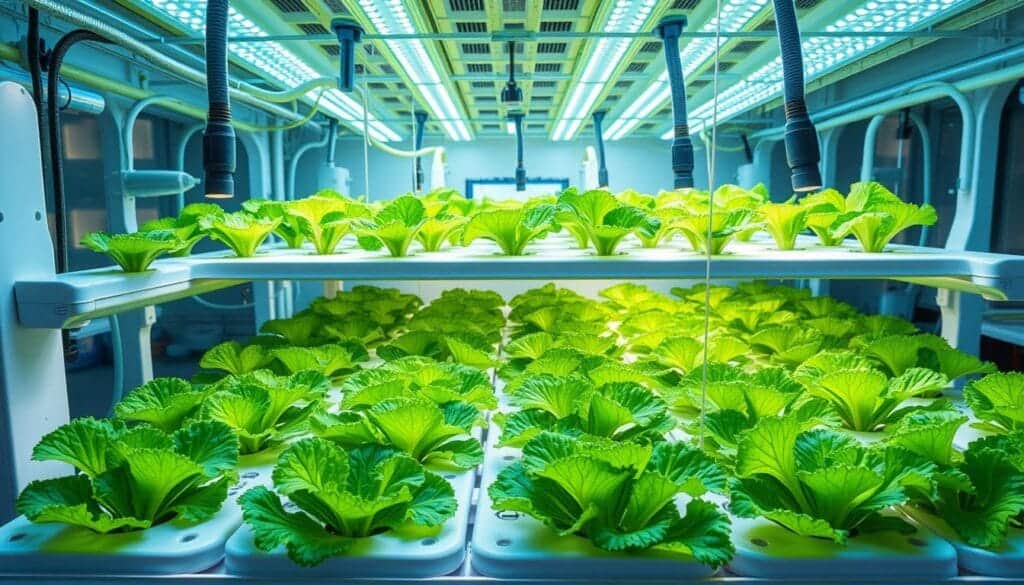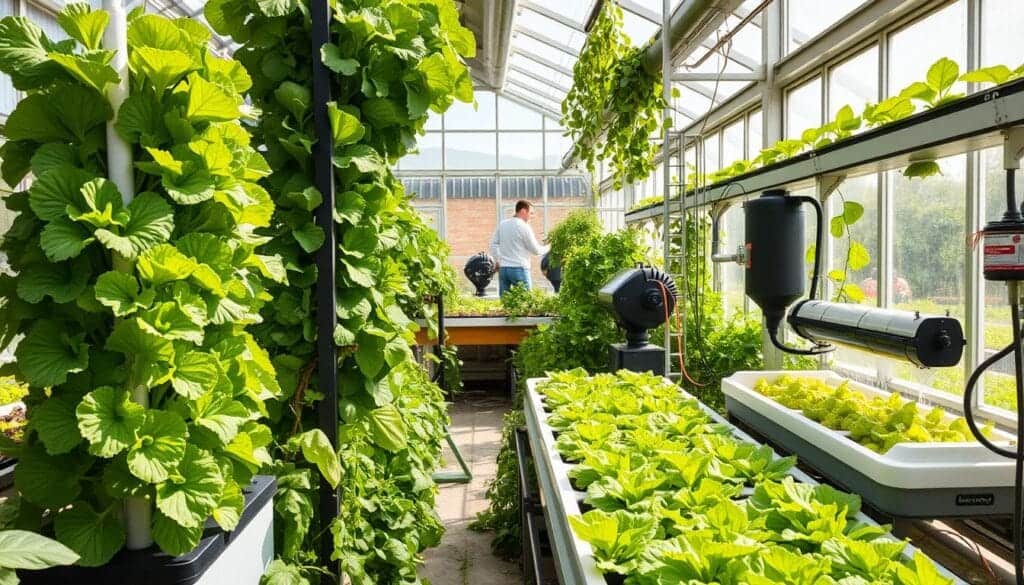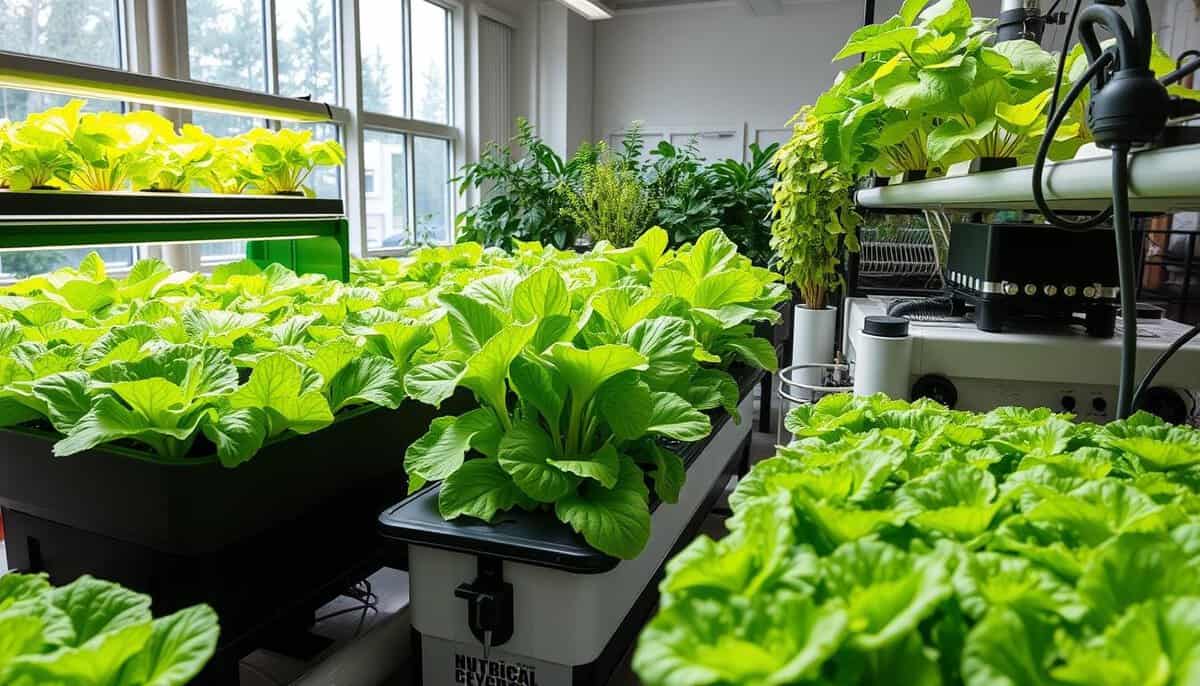Thinking about growing Rafael lettuce? You might wonder which is the best hydroponic system for Rafael lettuce. There are many options, making it hard to pick the right one. You want your hydroponic system to work well and help your Rafael lettuce grow strong.
Choosing the best hydroponic system for Rafael lettuce involves several factors. You need to think about what Rafael’s lettuce needs to grow well. Also, consider the cost and features of each system. By comparing options, you can find the best hydroponic system for Rafael lettuce to suit your needs.
Key Takeaways
- You need to consider the specific growing requirements of Rafael lettuce when choosing a hydroponic system.
- There are several types of hydroponic farming systems available, each with unique benefits and drawbacks.
- The cost of a hydroponic system is an important factor to consider, but it’s not the only thing to think about.
- Some hydroponic systems are better suited for small-scale growers, while others are more suitable for large-scale commercial operations.
- By researching and comparing your options, you can choose the best hydroponic system for growing Rafael lettuce.
- Understanding the different types of hydroponic systems, including their components and benefits, can help you make an informed decision.
Understanding Rafael Lettuce’s Growing Requirements
To grow Rafael lettuce, you need to know its growing needs. This includes creating the right environment with temperature, humidity, and light. An indoor hydroponic system can give your lettuce the best conditions for growth.
When growing Rafael lettuce, it’s key to consider its specific needs. It needs a balanced nutrient solution for healthy growth. A well-designed indoor hydroponic system can provide the necessary nutrients and conditions for your lettuce to thrive.
Optimal Growing Conditions
The best temperature for growing Rafael lettuce is between 60-70°F (15-21°C). Humidity should be kept at 50-60%. Light is also important, with at least 12 hours of light per day. An indoor hydroponic system can be set up to meet these conditions, helping your lettuce grow strong and healthy.
Nutrient Requirements
Rafael lettuce needs a balanced diet of nutrients to grow well. This includes nitrogen, phosphorus, and potassium. Hydroponic gardening solutions can provide the necessary nutrients. A well-designed indoor hydroponic system ensures your lettuce gets the right nutrients at the right time.
Best Hydroponic System for Rafael Lettuce: A Complete Overview
Choosing the right hydroponic system for growing Rafael lettuce is key. Advanced systems boost crop yields and cut down water use. They let you grow many crops, like lettuce, in a controlled space.
When picking a hydroponic system, consider. Nutrient delivery, automation level, and cost. Innovative hydroponic technology has created many systems, from DIY to commercial. Knowing your options helps you choose the best one for you.
Here are some benefits of using advanced hydroponic systems for Rafael lettuce:
- Increased crop yields
- Reduced water consumption
- Improved crop quality
- Reduced labor costs
Choosing the right hydroponic system for your Rafael lettuce brings many benefits. You’ll see more yields and lower costs. With today’s technology, you can grow your crops to their fullest.
| Hydroponic System | Benefits | Limitations |
|---|---|---|
| Advanced Hydroponic Systems | Increased crop yields, reduced water consumption | Higher initial investment |
| Innovative Hydroponic Technology | Improved crop quality, reduced labor costs | Requires regular maintenance |
Deep Water Culture (DWC) Systems for Lettuce Production
Deep Water Culture (DWC) systems are a favorite for growing lettuce hydroponically. They keep lettuce roots in a nutrient-rich solution for optimal growth. To start, you’ll need a water reservoir, air stones, and net pots.
DWC systems offer many benefits, like high yields and water savings. But, they can also face challenges like waterborne diseases. Knowing the pros and cons of DWC systems helps you decide if it’s right for you.
System Components and Benefits
- Water reservoir: This is the heart of a DWC system, holding the nutrient-rich solution for the lettuce plants.
- Air stones: These add oxygen to the water, helping the roots grow strong and healthy.
- Net pots: These hold the lettuce plants above the water, letting the roots soak up nutrients.
Cost Analysis
The cost of a DWC system varies based on its size and complexity. But, with the right equipment, you can get high yields and save water. This makes it a good investment for growing lettuce.
Nutrient Film Technique (NFT) Solutions
The Nutrient Film Technique (NFT) is a favorite for growing lettuce in hydroponic systems. It keeps a steady flow of nutrient-rich water over the roots. This method is great for indoor systems because it lets you control nutrients and water flow precisely.
NFT systems offer many benefits. They produce high yields, use water efficiently, and save space. They also need less care because the water flow automates watering. Key parts of an NFT system include:
- Nutrient reservoir
- Pump
- Tubing
In indoor systems, NFT is perfect for growing many lettuce types. It ensures you have fresh, healthy lettuce all year. Plus, it’s good for the environment.
Vertical Hydroponic Systems for Space Efficiency
Using advanced hydroponic systems is a smart way to grow lettuce like Rafael. These systems are perfect for both big farms and small homes. They help you make the most of your space.
These systems can be tailored to meet your needs. They might include trellis systems and living walls. With LED grow lights and special nutrients, you can grow a lot of lettuce efficiently.
Some key benefits of vertical hydroponic systems are:
- Space efficiency: You can grow a lot of lettuce in a small space.
- Increased yields: These systems help you grow more lettuce faster.
- Water conservation: They use much less water than traditional farming.
Vertical hydroponic systems are ideal for growing lettuce. They use the latest in hydroponic technology.
| System Type | Space Efficiency | Yield |
|---|---|---|
| Trellis System | High | Medium |
| Living Wall | Very High | High |
Aeroponics: Advanced Technology for Lettuce Cultivation
Aeroponics is a cutting-edge method for growing lettuce. It uses a fine mist to feed nutrients to the roots. This helps plants grow strong and increases their yield. To start, you’ll need specific hydroponic gear, like a misting system and a nutrient tank.
Aeroponics has many perks, such as high yields, water savings, and less chance of root rot. Here are some important things to think about for an aeroponic setup:
- High-pressure misting system for efficient nutrient delivery
- Nutrient reservoir to store and manage nutrient solutions
- Aeroponic chambers or towers to support plant growth

Investing in a good hydroponic setup and quality equipment can make your lettuce grow better.
| Hydroponic Method | Water Efficiency | Yield Increase |
|---|---|---|
| Aeroponics | High | 20-30% |
| Hydroponics | Medium | 10-20% |
| Traditional Farming | Low | 0-10% |
Ebb and Flow Systems: Advantages and Considerations
Ebb and flow systems are a top pick for growing lettuce in hydroponics. They are great for indoor setups because they save water and grow lots of lettuce. To get the best results, it’s important to know how to set them up and take care of them.
System Setup Guide
To start an ebb and flow system, you need a few things. You’ll need a grow tray, a reservoir, a pump, and a timer. The grow tray is where your lettuce will grow. The reservoir holds the nutrient solution.
The pump and timer work together. They fill the grow tray with solution and then drain it back into the reservoir.
Maintenance Requirements
Keeping your ebb and flow system in good shape is key. You should check the water level and pH of the solution often. This makes sure your lettuce gets the nutrients it needs and the system works well.
Some important things to think about with ebb and flow systems are:
- Water quality and temperature control
- Nutrient solution management
- System cleaning and maintenance schedules
By following these tips and understanding the pros and cons of ebb and flow systems, you can make a great indoor hydroponic lettuce system. It will grow high-quality lettuce and use less water.
Environmental Control Systems and Monitoring
Growing Rafael lettuce in advanced hydroponic systems requires careful control of the environment. You need to manage temperature, humidity, and light levels. Thanks to innovative hydroponic technology, you can monitor and adjust these factors with great precision.
Thermostats and humidistats are key in controlling temperature and humidity. These tools help keep your plants in the best conditions for growth. Data loggers and sensors also offer insights into your plants’ environment. This lets you make necessary adjustments.
Using environmental control systems and monitoring has many benefits. It leads to better plant growth and higher yields. It also makes your growing process more efficient and reduces waste. Plus, it helps prevent and manage diseases.
Investing in advanced hydroponic systems and technology can elevate your plant growth. With precise control and real-time monitoring, you can optimize your growing conditions. This results in better results for your plants.
Cost Comparison Across Different Hydroponic Methods
When you think about growing lettuce hydroponically, it’s important to look at the costs. The price of setting up a hydroponic system can change a lot. This depends on the type of system and the equipment needed for growing lettuce.
The cost of a hydroponic system is a big factor. For instance, a Deep Water Culture (DWC) system might cost more upfront than a Nutrient Film Technique (NFT) system. But, DWC systems might use less energy, which can save money over time.
Here’s a table that shows the costs for different hydroponic methods:
| Hydroponic Method | Initial Investment | Operating Costs |
|---|---|---|
| DWC | $1,000 – $3,000 | $500 – $1,000 per year |
| NFT | $500 – $2,000 | $300 – $800 per year |
| Aeroponics | $2,000 – $5,000 | $1,000 – $2,500 per year |
Looking at the costs of different hydroponic methods helps you choose the right setup for growing lettuce. This way, you can pick the best hydroponic equipment for your needs.

Maintenance and Troubleshooting Guide
Running your hydroponic farming systems well is key. This is even more true for indoor hydroponic lettuce systems, where things can get tricky.
Problems like clogged tubes and pump failures can happen. To avoid these, regular cleaning and inspection are a must. Here’s a brief checklist to follow:
- Check and clean the tubes and pumps regularly
- Monitor the system’s pH and nutrient levels
- Replace worn-out or damaged parts promptly
By keeping up with maintenance, you can avoid long breaks. For bigger problems, look at the manual or talk to a hydroponic pro.
A well-kept indoor hydroponic lettuce system means healthier plants and better harvests.
| Maintenance Task | Frequency |
|---|---|
| Check and clean tubes and pumps | Weekly |
| Monitor pH and nutrient levels | Daily |
| Replace worn-out or damaged parts | As needed |
Scaling Your Hydroponic Operation: From Hobby to Commercial
Thinking about turning your hydroponic hobby into a business? You’ll face several important decisions. You’ll need to look at your space, the equipment you’ll need, and how to run your business. Advanced hydroponic systems can help you grow efficiently and productively.
Scaling up means you’ll need more space and better lighting. You might need a bigger place or new tech that uses space well. Key things to think about include:
- Space requirements: larger growing areas and increased lighting
- Equipment upgrades: larger pumps, reservoirs, and nutrient delivery systems
- Business considerations: marketing, sales, and distribution strategies
Investing in top-notch hydroponic systems and tech can make your business thrive. You might use automation, monitoring tools, and data to make smart choices. With good planning, you can grow your hydroponic business and meet your goals.
Scaling up your hydroponic business means focusing on your market and what customers want. Emphasize quality, efficiency, and new ideas to build a strong brand. With the right strategy and investment in advanced hydroponic systems, you can succeed in the commercial market.
| Factor | Considerations |
|---|---|
| Space | Larger growing areas, increased lighting, and vertical space optimization |
| Equipment | Larger pumps, reservoirs, and nutrient-delivery systems |
| Business | Marketing, sales, and distribution strategies |
Conclusion
Choosing the right hydroponic system is key to growing great Rafael lettuce. This guide has shown you how to pick the best system for your needs. You can use Deep Water Culture, Nutrient Film Technique, or Aeroponics to grow a healthy indoor garden.
If you’re starting small or want to grow more, this article has the info you need. It helps you think about costs and how much you’ll make. This way, you can find the best hydroponic system for Rafael lettuce that fits your budget.
Keep learning and trying new things as you grow your hydroponic lettuce. Stay open to new methods and always check and improve your setup. With the right knowledge and effort, you’ll have a lot of fresh, healthy lettuce from your hydroponic garden.

